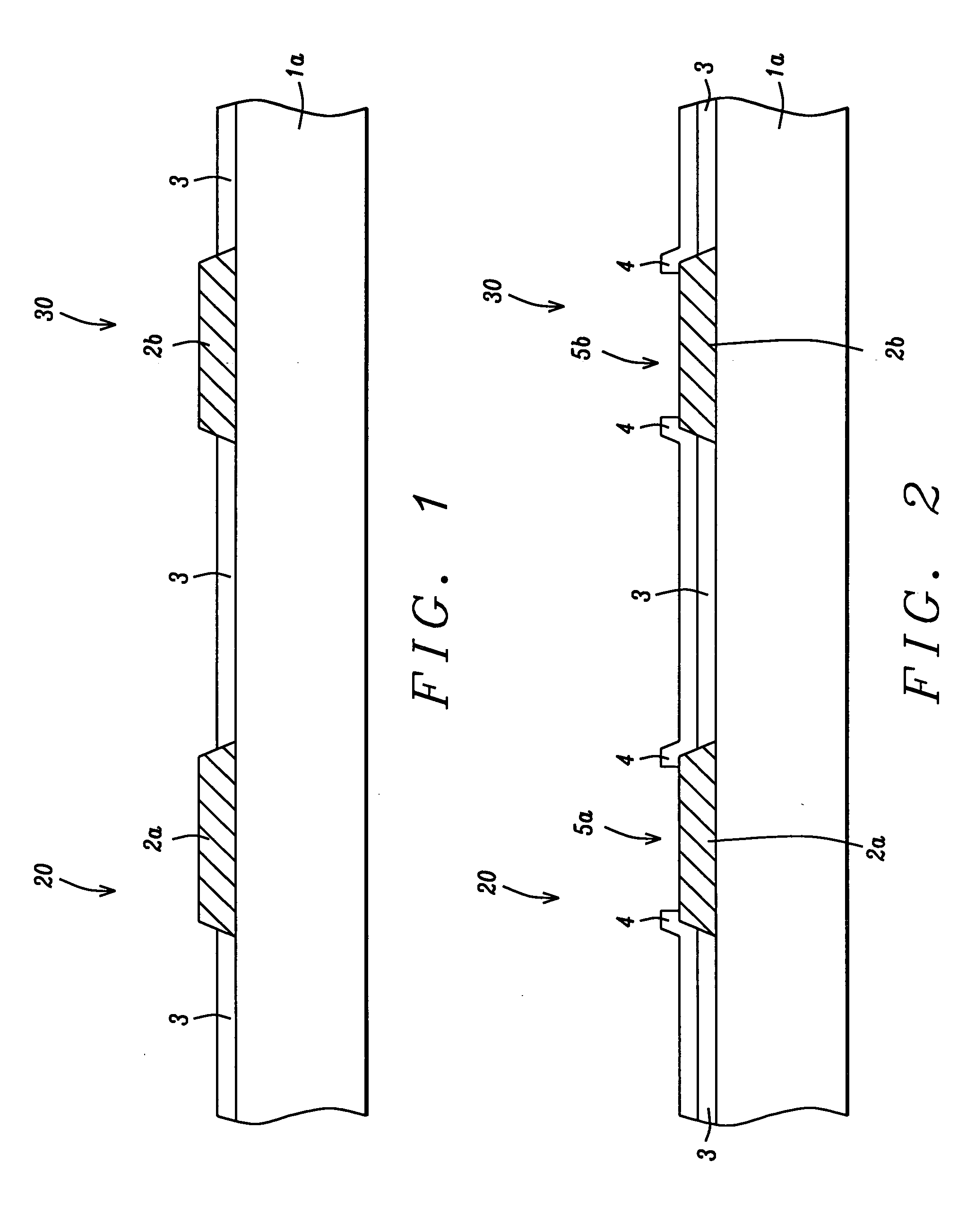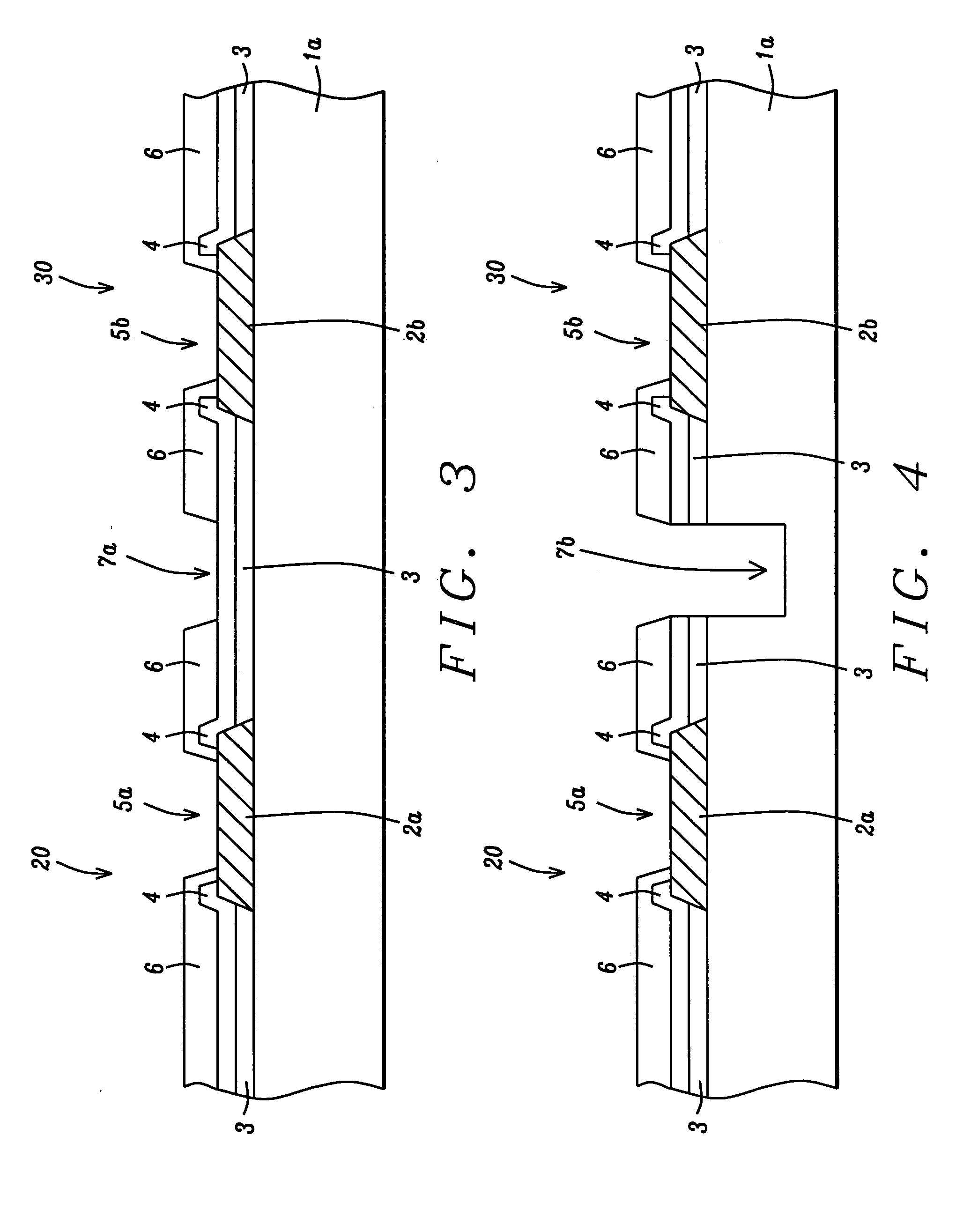Polymer encapsulated dicing lane (PEDL) technology for Cu/low/ultra-low k devices
a technology of polymer encapsulation and dicing lane, which is applied in the direction of semiconductor devices, semiconductor/solid-state device details, electrical apparatus, etc., can solve the problems of reducing capacitance, reducing mechanical and thermal stability, and presenting yield and reliability vulnerabilities of semiconductor devices
- Summary
- Abstract
- Description
- Claims
- Application Information
AI Technical Summary
Benefits of technology
Problems solved by technology
Method used
Image
Examples
Embodiment Construction
[0012] The method of fabricating a semiconductor device comprised with copper interconnect structures and low k layers featuring polymer encapsulation layers used to protect the key components of the semiconductor device during specific processing steps such as dicing, will now be described in detail. Semiconductor substrate 1, which will be used to provide the final diced chips, is schematically shown in FIG. 1. Semiconductor substrate 1, is comprised with the necessary micro-electronic elements, (not shown in the drawings), such as metal oxide semiconductor field effect transistor (MOSFET) devices, resistors, and capacitors. These elements formed via front end of the line (FEOL), as well as back end of the line (BEOL), processes, are either embedded in, or located on the top surface of semiconductor substrate 1. Portion 20, of semiconductor substrate 1, will be used to fabricate devices which will require wire bonding for subsequent external connection, while portion 30, of semico...
PUM
| Property | Measurement | Unit |
|---|---|---|
| thickness | aaaaa | aaaaa |
| thickness | aaaaa | aaaaa |
| dielectric constant | aaaaa | aaaaa |
Abstract
Description
Claims
Application Information
 Login to View More
Login to View More - R&D
- Intellectual Property
- Life Sciences
- Materials
- Tech Scout
- Unparalleled Data Quality
- Higher Quality Content
- 60% Fewer Hallucinations
Browse by: Latest US Patents, China's latest patents, Technical Efficacy Thesaurus, Application Domain, Technology Topic, Popular Technical Reports.
© 2025 PatSnap. All rights reserved.Legal|Privacy policy|Modern Slavery Act Transparency Statement|Sitemap|About US| Contact US: help@patsnap.com



